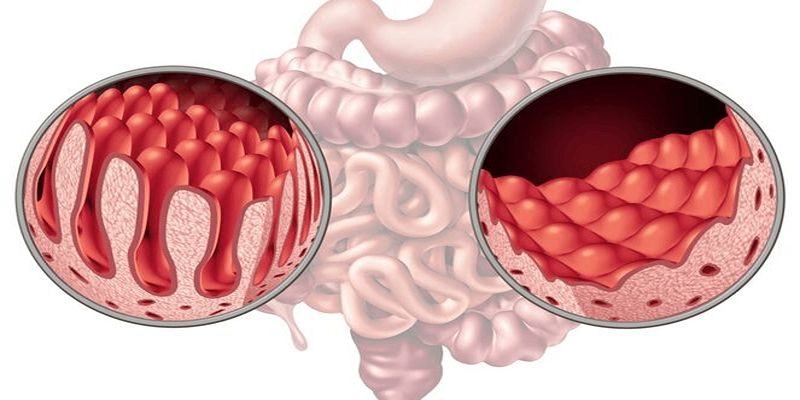
Celiac Disease
Celiac disease is an autoimmune disorder in which the ingestion of gluten—a protein found in wheat, barley, and rye—triggers an immune response that damages the lining of the small intestine. This damage impairs the absorption of nutrients from food, leading to a variety of symptoms and potential complications.
Causes of Celiac Disease:
- Genetics: Celiac disease tends to run in families, indicating a strong genetic component. People with certain genes (HLA-DQ2 and HLA-DQ8) are more susceptible to developing the condition.
- Immune Response: In celiac disease, the immune system mistakenly identifies gluten as a threat and mounts an attack against it. This immune response leads to inflammation and damage to the villi, tiny finger-like projections lining the small intestine that are crucial for nutrient absorption.
- Environmental Triggers: While the exact triggers are not fully understood, environmental factors such as infections, surgeries, or pregnancy might trigger the onset of celiac disease in genetically predisposed individuals.
Symptoms of Celiac Disease:
Symptoms of celiac disease can vary widely and may affect different systems in the body. Some people experience digestive symptoms, while others have symptoms that seem unrelated to the digestive system.
-
Digestive Symptoms:
- Diarrhea: Chronic or intermittent, often foul-smelling.
- Bloating and Gas: Abdominal bloating and excess gas.
- Abdominal Pain: Cramping or discomfort in the abdomen.
- Constipation: Some individuals may experience constipation instead of diarrhea.
- Nausea and Vomiting: Feeling sick to the stomach, sometimes leading to vomiting.
- Weight Loss: Unintentional weight loss due to malabsorption.
-
Non-Digestive Symptoms:
- Fatigue: Persistent tiredness due to malnutrition or anemia.
- Anemia: Often caused by iron deficiency due to poor absorption.
- Bone or Joint Pain: Caused by nutrient deficiencies, particularly calcium and vitamin D.
- Osteoporosis: Weakening of bones due to poor calcium absorption.
- Dermatitis Herpetiformis: An itchy, blistering skin rash associated with celiac disease.
- Neurological Symptoms: Numbness, tingling, or headaches.
- Mouth Ulcers: Sores inside the mouth.
- Irregular Menstrual Cycles: Can affect fertility in women.
-
In Children:
- Growth Problems: Failure to thrive or delayed growth and puberty.
- Irritability: Children with celiac disease may be unusually irritable.
- Dental Enamel Defects: Discoloration or defects in tooth enamel.
Diagnosis of Celiac Disease:
- Blood Tests: Screening for celiac disease usually starts with blood tests to detect specific antibodies that are typically elevated in individuals with the condition, such as tissue transglutaminase antibodies (tTG-IgA).
- Genetic Testing: Genetic tests can identify the presence of the HLA-DQ2 or HLA-DQ8 genes, which are associated with celiac disease. However, having these genes does not mean a person will definitely develop the disease.
- Endoscopy and Biopsy: If blood tests suggest celiac disease, a doctor may perform an endoscopy to examine the small intestine and take biopsies (tissue samples). The biopsy can reveal damage to the villi, confirming the diagnosis.
- Gluten Challenge: In some cases, particularly if a person has already started a gluten-free diet, a gluten challenge (reintroducing gluten under medical supervision) may be conducted to see if symptoms reoccur and antibodies rise.

